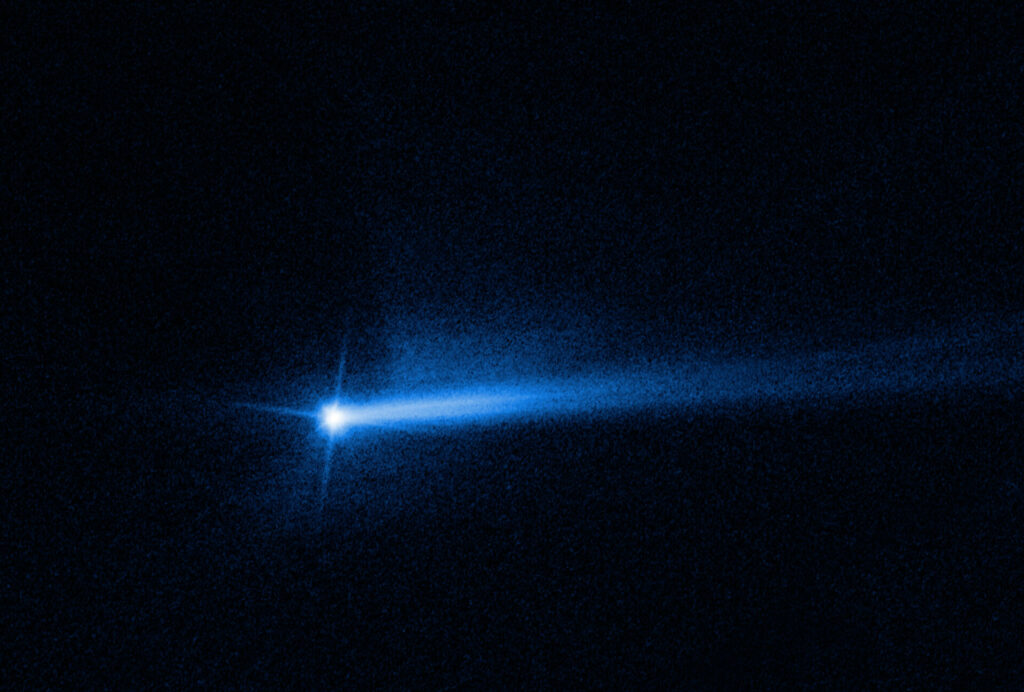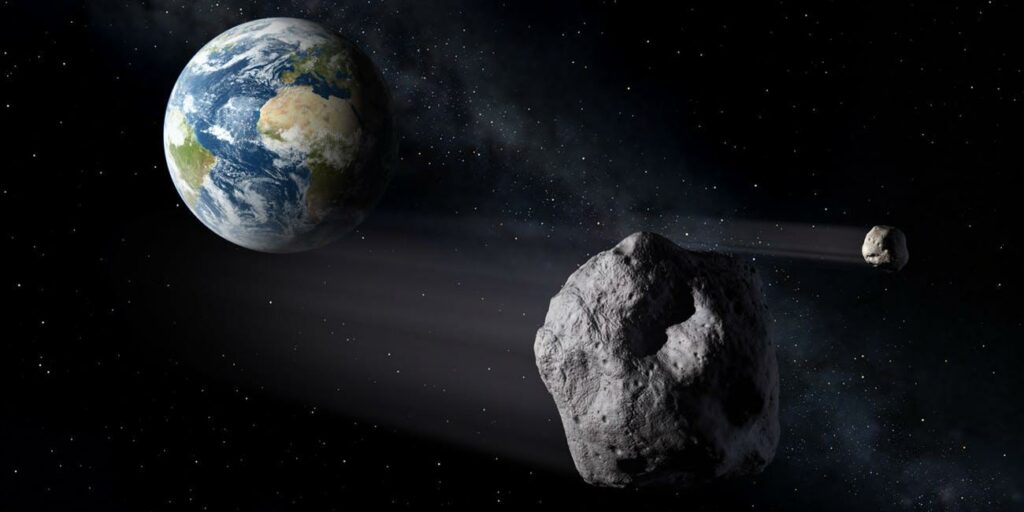China has chosen the near-Earth asteroid 2019 VL5 as the target of the mission, the purpose of which will be to change the orbit of the celestial body. It will be launched in 2025.
Ram of the asteroid Dimorphos
In September 2022, the DART spacecraft created by NASA rammed the Dimorphos asteroid, which is a moon of the larger asteroid Didymos. The purpose of the operation was to test the possibility of changing the orbit of a celestial body threatening the Earth by kinetic action.

The experiment was a success. The impact knocked out from one to ten thousand asteroid matter and led to a change in the orbital period of the Dimorphos by 32 minutes. This is much more than the computer models suggested.
Already next year, ESA will send a Hera mission to Dimorphos. It will study the long-term effects of the collision, as well as study the crater formed during its course.
“Chinese copy” of DART
Even before the launch of DART, China announced the development of a similar mission. In its course, the Celestial Empire will launch a pair of probes to a near-Earth asteroid. One of them will ram a small body, and the other will study the consequences of the collision.

Initially, it was stated that the target of the Chinese experiment would be asteroid 2020 PN1, and the mission would be launched in 2026. But the Celestial Empire changed its plans. At the Eighth Planetary Defense Conference recently held in Vienna, it was announced that the target of the Chinese mission would be an object known under the designation 2019 VL5. It is a near-Earth asteroid of the Aten-class family. Its diameter is about 30 meters, it is not considered potentially dangerous.
The date of the mission has also changed. It was postponed from 2026 to 2025. As before, China plans to launch two probes. The first, like DART, will ram an asteroid, the second will perform the role of Hera and study the consequences of the collision. As for 2020 PN1, it is now a backup mission target. China will strike at it if, for some reason, the launch of the spacecraft is postponed to 2026-2027.
According to https://spacenews.com
Follow us on Twitter to get the most interesting space news in time
https://twitter.com/ust_magazine

